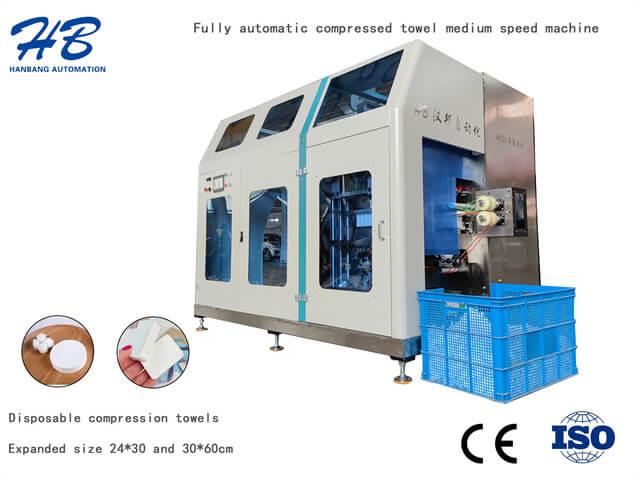Author:HB Nonwoven MachineryFROM:Compressed Towel Machine Manufacturer TIME:2023-12-16
Operating Non Woven Slitting Machine in the Diaper and Sanitary Napkin Industry
The diaper and sanitary napkin industry plays a significant role in ensuring hygiene and comfort for individuals. In this industry, the production process involves various stages, including cutting and slitting non-woven fabrics to create the desired size and shape of diapers and sanitary napkins. Operating non-woven slitting machines is a crucial step in this process, as it allows precise and efficient cutting of the fabrics.

Non-woven slitting machines are vital in the diaper and sanitary napkin industry for several reasons. Firstly, they enable manufacturers to achieve consistent and accurate cutting of non-woven fabrics, ensuring uniformity in product quality. Additionally, these machines offer high productivity and efficiency by automating the cutting process, saving time and reducing labor costs.
Non-woven slitting machines operate on the principle of rotary cutting. They consist of sharp circular blades that swiftly rotate and cut through the non-woven fabric rolls. The rolls are fed into the machine, where they pass through the cutting mechanism and are slit into narrower strips of the desired width. These strips are then further processed to create individual diapers or sanitary napkins.
Modern non-woven slitting machines come equipped with advanced features and capabilities that enhance their performance. Some of these features include automatic tension control, adjustable cutting speed, and precise length measurement. Moreover, these machines can handle various types of non-woven fabrics, such as spunbond, meltblown, and SMS materials, allowing manufacturers to cater to different product requirements.
Regular maintenance of non-woven slitting machines is essential to ensure their optimal performance and longevity. This includes routine cleaning, lubrication, and inspection of blades and cutting mechanisms. Additionally, operators must follow strict safety protocols while operating these machines, such as wearing appropriate protective gear and adhering to machine-specific guidelines to prevent accidents and injuries.
The diaper and sanitary napkin industry continually evolves, driven by technological advancements. Similarly, non-woven slitting machines have undergone significant improvements over the years. Recent advancements include the integration of computerized controls for precise cutting measurements and the incorporation of artificial intelligence for predictive maintena

Sustainability has become a significant concern in the diaper and sanitary napkin industry. Non-woven slitting machines can contribute to environmentally friendly practices by optimizing material usage and reducing waste. Through precise cutting and efficient use of non-woven fabric rolls, manufacturers can minimize material wastage, leading to cost savings and a reduced environmental footprint.
The future of non-woven slitting machines in the diaper and sanitary napkin industry looks promising. With ongoing technological advancements, these machines will continue to enhance productivi

Operating non-woven slitting machines is a crucial step in the production process of diapers and sanitary napkins. These machines ensure precise and efficient cutting of non-woven fabrics, enabling manufacturers to provide high-quality products. With advancements in technology and increasing emphasis on sustainability, the future of non-woven slitting machines looks bright, promising further improvements in the industry.





